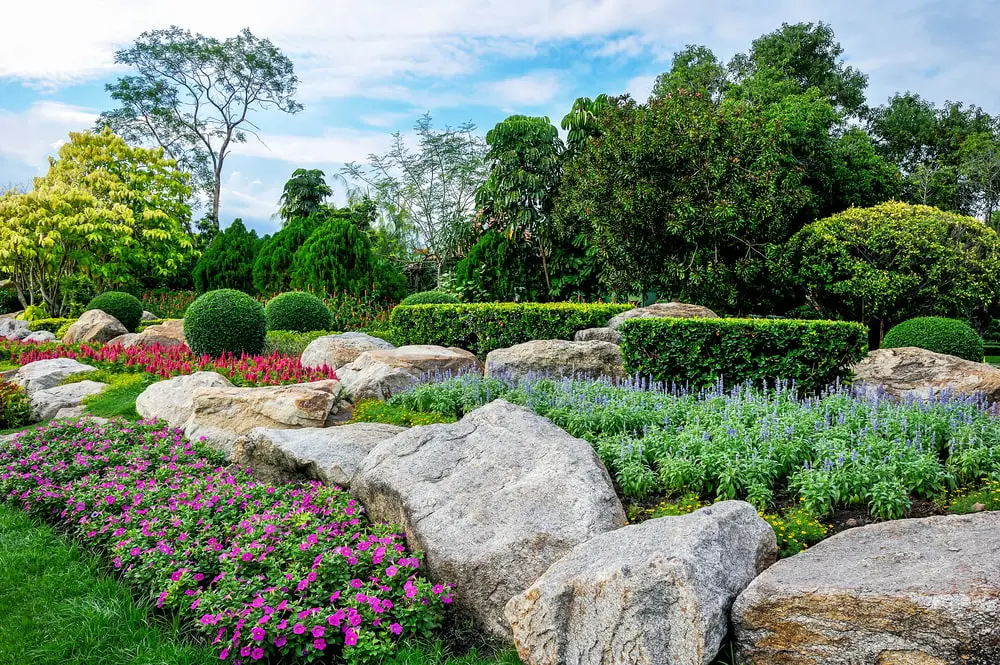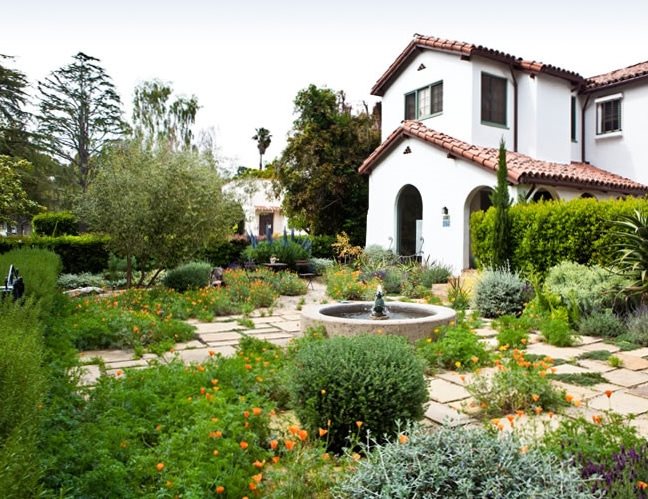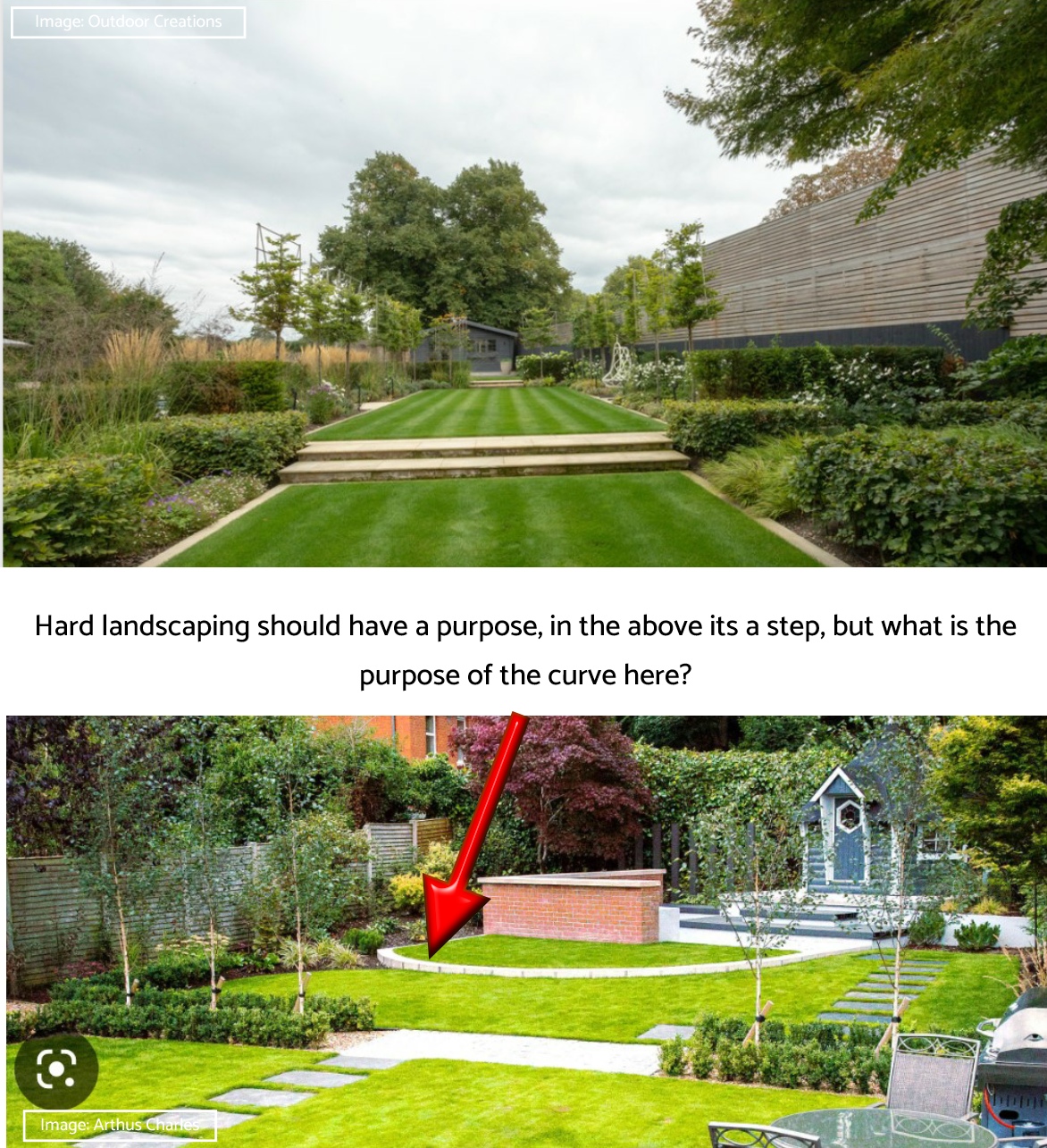What Does Hilton Head Landscapes Do?
Table of ContentsLittle Known Facts About Hilton Head Landscapes.Hilton Head Landscapes for BeginnersThe Facts About Hilton Head Landscapes RevealedEverything about Hilton Head LandscapesThe smart Trick of Hilton Head Landscapes That Nobody is Talking AboutThe 9-Minute Rule for Hilton Head LandscapesSome Known Questions About Hilton Head Landscapes.
Line creates all kinds and patterns and can be made use of in a range of ways in the landscape. Line in the landscape is produced by the edge in between two materials, the summary or shape of a kind, or a long linear function. Lines are a powerful tool for the developer due to the fact that they can be utilized to develop a boundless selection of shapes and forms, and they regulate motion of the eye and the body.

Lines can have several features, such as those defined listed below, yet they normally serve different objectives. Figure 1. Lines in the landscape - landscaping hilton head sc. The residential or commercial properties of lines determine just how individuals react to the landscape, both emotionally and literally. Straight lines are architectural and powerful; they create an official character, are typically related to a symmetrical layout, and lead the eye directly to a prime focus.
Hilton Head Landscapes Things To Know Before You Get This
Curved lines produce a casual, all-natural, loosened up personality that is connected much more with nature and asymmetrical equilibrium. Rounded lines move the eye at a slower pace and include mystery to the area by producing surprise views.
Upright lines in the landscape consist of high, narrow plant product, such as trees, or high structures, such as an arbor or a bird home on a post. Horizontal lines move the eye along the ground aircraft and can make a space feel larger. Low lines are more suppressed and produce a feeling of rest or repose.
The Greatest Guide To Hilton Head Landscapes
Lines are likewise developed by the upright types of developed attributes and plant product. There are 3 key line types that create form in the landscape: bedlines, hardscape lines, and plant lines.
Bedlines connect plant material to the home and hardscape due to the fact that the eye complies with the line, moving the stare via the landscape. Hardscape lines are produced by the side of the hardscape, which defines the developed framework. Line can also be created by lengthy and slim materials, such as a fencing or wall.
The Definitive Guide to Hilton Head Landscapes
Form is discovered in both hardscape and plants, and it is normally the leading aesthetic element that spatially arranges the landscape and frequently figures out the style of the garden. The form of structures, plant beds, and yard ornaments additionally figures out the overall type motif of the yard. Formal, geometric kinds include circles, squares, and polygons.
Plants produce type in the yard with their outlines or silhouettes, however form can also be specified by a space or unfavorable room between plants - landscaping hilton head sc (https://yoomark.com/content/family-owned-and-operated-hilton-head-landscapes-has-been-serving-beaufort-county-over). Circles can be complete circles, or they can be split right into half circles or circle sections and combined with lines to create arcs and tangents
Hilton Head Landscapes - Questions
Circles can likewise be stretched into ovals and ellipses for more variety and interest. Circles are a solid style kind since the eye is constantly drawn to the center, which can be used to stress a prime focus or connect various other types. Figure 2. Circular kinds in hardscape and find more information lawn panels.
The square type can likewise be fractional and secondhand consistently to develop a grid pattern. Unlike circles, squares are stronger on the sides, which can be lined up or overlapped to create special patterns and more complex forms.
Meandering lines often simulate the natural course of rivers or streams and can be explained as smooth lines with deeply rounded undulations. Meandering lines (Number 3) work well for paths, plant bedlines, and completely dry stream beds. Twisting lines can add passion and secret to a garden by leading customers around corners to discover brand-new views and rooms.
About Hilton Head Landscapes

Figure 5. Fragmented edges: tipping rocks in path. Type is one of the most enduring quality of a plant (Landscapers near me). https://hub.docker.com/u/h1tnhdlndscps. Usual plant kinds are well established and standard, as kind is one of the most regular and well-known quality of plants. Type can additionally be produced through the massing of plants, where the overall mass creates a different form than a private plant.
A highly contrasting type must be used with careone or 2 work well as a focal factor, but also many wreak havoc. All-natural plant forms, as opposed to over-trimmed types, need to develop the bulk of the structure. The importance of general type is essentially depending on the watching perspectivethe kind of a tree can show up fairly various to a person standing under the cover versus viewing the tree from a distance in an open area.
The Hilton Head Landscapes Ideas
Plant types likewise produce and specify the gap or open rooms between the plants, developing either convex or scooped types in deep spaces. High-arching tree branches normally create a concave open area under the branches, and a round cover with low branches fills the space to develop a convex type in the open area under the tree.
